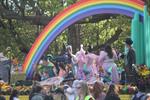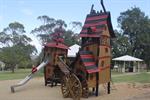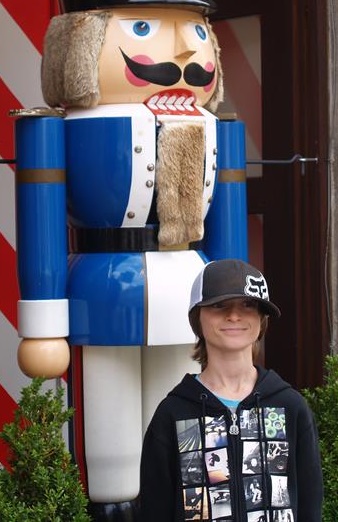
Learn to Write for Children
Children's literature is a thriving industry.
Encompassing fiction, non-fiction, educational, app, audio and visual texts, children's literature is a rapidly growing field.
In this course, you'll draw on aspects of child psychology and writing craft to create your own children's texts. You'll study successful children's texts, learning how and why they work, then start applying that knowledge as you work through our custom set tasks and assignments.
COURSE STRUCTURE
There are ten lessons in this unit, as follows:
Lesson 1. Introduction
- Understanding children
- Child development
- Learning -Habituation, Vicarious Learning, Classical Conditioning, Operant Conditioning
- Children's cognitive development
- Implications for Writers
- Socialisation
- Culture
Lesson 2. Overview of Children’s Writing
- Categories (fiction & non-fiction)
- Understanding the marketplace
- Bookshops, children's book awards, writers events
- Writing resources - personal experience, colleagues, publications, organisations
Lesson 3. Conceptualisation
- Introduction
- Conceptualisation
- Generating ideas
- Developing a concept - gathering content, direction, blueprint
- Planning your writing
- Tips for the beginner
- Making meanings clear
- Illustrative contexts
- Glossing
- Definition
Lesson 4. Children’s Writing for Periodicals
- Scope of periodicals
- What publishers consider
- Genre
- Risk management
- Reader interest and expectations
- News values
- Storyline
- Perceived need
- Cost and profit potential
- Short feature articles
- Submitting to periodicals - speculative, proposals
- Periodical writing styles - technical, language, content, approach
- Conciseness
- Common problems that disrupt conciseness
Lesson 5. Short Stories
- Introduction
- Elements of a short story
- Theme
- Short story plot
- Short story characterisation
- Assessing your short story
Lesson 6. Non-Fiction
- Introduction
- Non fiction genres for children - Textbooks, other
- Characteristics of good non fiction
- Teaching goal
- Organisation
- Accuracy
- Format and style
- Mechanics of writing - word budget, organising chapters, writing structure, drafting, writing routine, writing equipment
- Submitting a proposal - proposals, selling your idea
- Reviewing your writing
Lesson 7. Fiction
- Settings
- Characterisation
- Fantasy
- Science fiction
- Adventure
Lesson 8. Picture Books and Story Books
- Picture books - for babies and toddlers
- Books for pre schoolers and early school children
- Story books for young children
- Story books - 4 to 8 year olds
- Starting a child reading when they are younger
Lesson 9. Editing your work
- Introduction
- Editing process
- Self editing
- Things to look for - content, structure, presentation, accuracy, illustration, inappropriate language. etc
- Grammar
- Spelling
- Ambiguity
- Submitting for publication
Lesson 10. Project
- write a short story, picture book or children's page for a (hypothetical) periodical.
Duration: 100 hours
Course Aims
- Describe children’s cognitive development and target writing to be appropriate to various developmental stages.
- Explain the nature and scope of writing for children.
- Describe the process of planning a written manuscript of children’s writing.
- Describe the planning and processes involved in writing articles for children’s magazines.
- Develop a short story for children to read.
- Discuss the specific requirements associated with writing children’s non-fiction
- Describe the various categories of children’s fiction and the writing processes involved.
- Explain the scope and nature of literature aimed at young children.
- Explain the scope and significance of editing skills and processes for children’s writing.
- Plan, evaluate, edit and present a piece of writing for children
WHAT YOU WILL DO IN THIS COURSE
 Here are just some of the things you will do:
Here are just some of the things you will do:
- Develop lists of imaginary titles and brief descriptions of stories that would be appropriate in your society (or country) for children of different age groups.
- Analyse the page(s) in a text aimed at children in terms of language complexity and style, conciseness of the writing, content, graphic layout, etc
- Determine concepts for children’s writing.
- Develop outlines that would help you to write about each concept.
- Develop a set of guidelines (or a plan), that a writer should follow in regular preparation of a children’s page in a newspaper, and consider what, in your opinion, is the purpose of a children’s page in a daily newspaper.
- Discuss how you would approach writing a comic, and why you think this would be the best approach for you?
- Write short articles or stories, suitable for situations such as: An educational magazine, A preschooler or infant school age magazine or a teenage boy or girl magazine
- Write a short story.
- Identify a non-fiction book for children which you would be suited to write.
- Write an outline for a proposed non-fiction book. In your outline, you would include a list of major subject areas (or chapters) that the book would cover and a brief description of the content of each chapter. Include a brief description of how the book would be illustrated (ie. are photos appropriate, or line drawings, paintings, etc?). You would then write one or two pages for your non-fiction book.
- Write a fantasy, adventure or science fiction short story for a 7-8 year old, which fits specified criteria.
- Write a story for a 5-6 year old child.
- Edit some sample short articles.
- Plan, then write, a children’s short story, a picture book or children’s pages for a newspaper.
Scope of Children's Writing
 Children’s writing is a specialised craft.
Children’s writing is a specialised craft.
If you want to be successful at children's writing you need to understand both what children need to read, and what they want to read. To achieve this, you may consider studying not only writing; but also Child Psychology, and Developmental psychology.
It is a rewarding, inspirational and often demanding branch of writing and it seems that there is a growing market for children’s books. Because we have all been children, and because children’s books often appear so simple, many would-be writers believe that writing for children is easier than writing for adults. This is not the case, for children are as choosy as what they read as any adult, maybe even more so, and will quickly put down a book that does not immediately hold their interest. Adult readers, on the contrary, are often more willing to wade through a couple of unexciting chapters before they decide that a story is not worth reading. Another point is that while many of us recall our childhoods and enjoy reminiscing about them, not many of us can write in ways that are relevant or appealing to children.
Many successful writers of children’s stories and books succeed because they have developed sensitivity to children’s needs and developed their ability to write well. Others succeed because they write well, even though they are not particularly sensitive to children or their needs. In other words, you do not have to have or even like children to write good books or stories that children will want to read. But you do have to write well, and that can take a lot of hard work.
WAYS TO MAKE MEANINGS CLEARER
While the writer should be careful not to ‘dumb down’ a piece of writing for children, care should also be taken to make the text comprehensible to its intended reader. When writing about more complex ideas or where a higher-level vocabulary is appropriate, this can present a challenge for the writer. Below are some key methods for avoiding misunderstanding.
Illustrative Contexts
Follow a complex, imprecise or new word with a paragraph or sentence that gives one fixed meaning to that word. For example, the word ‘knew’ can be used to signify knowledge of a fact, intuition or belief. By means of the illustrative context in the following passage, the reader can understand that ‘know’ is associated with some kind of mystical or intuitive ability:
He looked at the rock and knew that she had passed by, that she had touched it for a moment, perhaps while removing grit from her sandal, that her heart was fearful; the rock vibrated slightly beneath his hand and he felt the warmth of her radiating weakly from it.
Glossing
A gloss was originally a note in the margin to explain a word. Today we either use footnotes or put the note in brackets straight after the word being explained. This is common in non-fiction, but can also occur in fiction. Note the glossing in the following example, which could be part of a fiction or non-fiction text:
This notion of serendipity (that things of great value often come to us when we are looking for something else entirely) puzzled him and his notebooks were filled with his attempts to make sense of it.
Definition
The most direct method of clarifying meaning, definition involves describing something in a ways that both puts it into a classification and distinguishes it from other things in that classification. For example, “A dog is a member of the genus Canis that has been domesticated by humans since prehistoric times”.